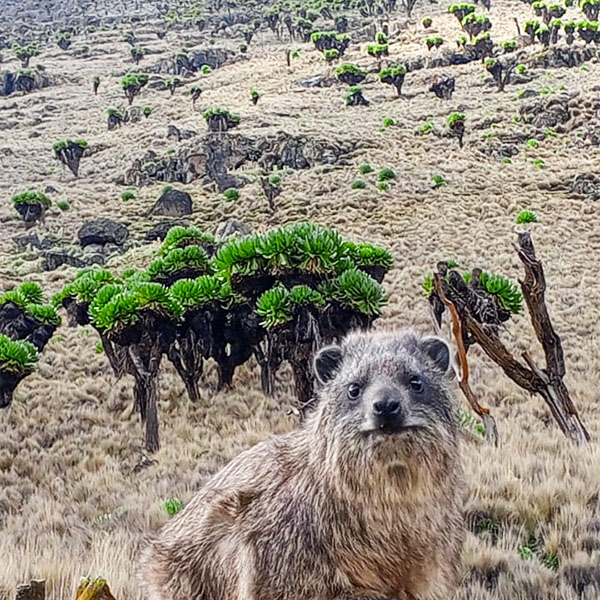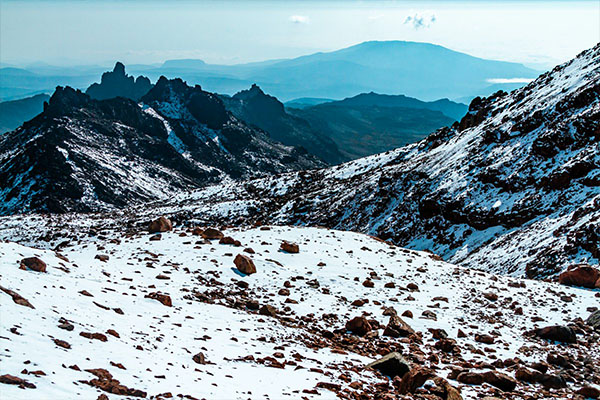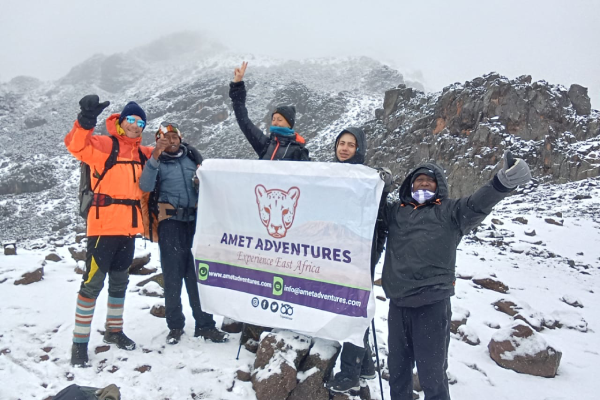FAQ
Most frequent questions and answers
Mt. Kenya stands at an impressive elevation of 5,199 meters (17,057 feet) above sea level. It is the second-highest mountain in Africa.
While both mountains offer incredible climbing opportunities, they are distinct in terms of difficulty and terrain. Mt. Kenya generally requires less technical expertise compared to Mount Kilimanjaro, but proper preparation and fitness are still essential.
Previous climbing experience is not mandatory for all routes on Mt. Kenya. There are routes suitable for beginners with a reasonable level of fitness. However, some routes, like the Technical Route, require advanced mountaineering skills and experience.
While it is not mandatory to hire a guide, it is highly recommended for safety reasons. Experienced guides have extensive knowledge of the mountain, weather patterns, and emergency procedures. They also enhance the overall experience by providing valuable insights and assistance along the way.
Climbing Mt. Kenya requires a moderate to high level of fitness. Regular cardiovascular exercises, such as hiking, jogging, or cycling, are beneficial to improve stamina and endurance. It’s advisable to consult with a healthcare professional before attempting the climb.
The best time to climb Mt. Kenya is during the dry seasons, which typically occur from January to February and July to October. These months offer better weather conditions and clearer visibility, increasing the chances of a successful climb.
The necessary equipment depends on the route and weather conditions. Generally, you will need sturdy hiking boots, warm clothing layers, a backpack, a sleeping bag, a headlamp, trekking poles, sunscreen, a hat, gloves, and a waterproof jacket. It is essential to pack appropriately and consult a gear checklist provided by your tour operator or guide.
While there is no strict age limit, climbers must be in good physical health and able to handle the demands of the chosen route. Children and older adults may find certain routes more challenging, and it’s advisable to consult with guides or tour operators for route suitability.
Yes, altitude sickness can be a concern when climbing Mt. Kenya. It is important to acclimatize properly by ascending slowly and allowing time for rest. Adequate hydration, nutrition, and awareness of symptoms are crucial. If symptoms worsen or become severe, it’s essential to descend and seek medical attention.
Yes, there are accommodation options available on Mt. Kenya. Mountain huts managed by the Kenya Wildlife Service (KWS) are situated along some routes. Tented camps, offering more comfort and amenities, are also available for those seeking a more luxurious experience. It’s advisable to book accommodation in advance.







